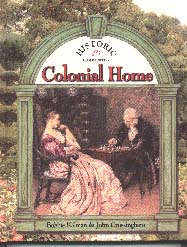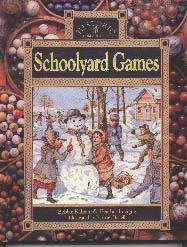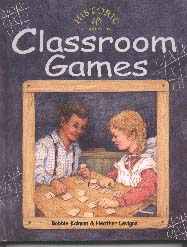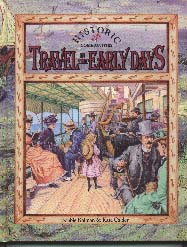|
________________
CM . . . .
Volume VII Number 19 . . . . May 25, 2001
St. Catharines, ON: Crabtree, 2001.
Grades 3 - 6 / Ages 8 - 11.
excerpt: (from Pioneer Recipes.) Swedish pioneers served their pancakes with lingonberry jam and sprinkled them with fine sugar. British settlers squeezed lemon juice on their thin pancakes and also sprinkled sugar on top. Welsh settlers added currants to their pancakes as the pancakes were cooking. Many Eastern Europeans put fruit preserves on thin pancakes, rolled them into tubes, and sprinkled them with sugar. The French put meat and vegetables or fresh fruit and cream into thin crepes. Russian blinis were small pancakes topped with sour cream, chopped boiled egg, and caviar or with a sweet filling. 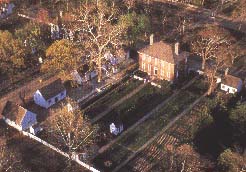 Part of a 31-book series, these five titles, all of which include a table of contents, index and
glossary, give students a general overview of pioneer life in North America. A double-page spread
is devoted to each of the sub-topics covered. Abundant, full-colour photographs (taken at a
number of historic sites) and sketches enhance the text which is simple and easy for youngsters to
comprehend. Words printed in boldface type appear in the glossary, but there is also ample use of
considerate text, explaining terms which might be unfamiliar to readers.
Part of a 31-book series, these five titles, all of which include a table of contents, index and
glossary, give students a general overview of pioneer life in North America. A double-page spread
is devoted to each of the sub-topics covered. Abundant, full-colour photographs (taken at a
number of historic sites) and sketches enhance the text which is simple and easy for youngsters to
comprehend. Words printed in boldface type appear in the glossary, but there is also ample use of
considerate text, explaining terms which might be unfamiliar to readers.
Pioneer Recipes begins with a pictorial glossary of cooking terms and safety tips for the student cook. The remainder of the book is divided into sections (tubers, corn, breads and muffins, desserts and beverages, to name a few), each of which is introduced by a short paragraph about how that particular type of food was grown, raised or prepared. There is also a comparison between the ways in which various ethnic groups used the same food. Several simple recipes are provided in each section, making this a useful book for students and teachers alike. The title is somewhat deceiving for the recipes are not exactly authentic. Rather, they are adaptations, employing modern-day appliances such as microwave ovens and food processors and currently available ingredients. To cite an example, the preamble to the Johnny Cake recipe states that this cake was excellent for long journeys because it did not contain milk, butter or eggs, which would spoil, yet the recipe given includes those very same ingredients. Colonial Home traces the development of pioneer houses from the very basic and temporary to the more permanent. Building methods and materials, including home and roofing styles, lighting and heating, and dependencies - extra buildings on the property, such as outhouses, smokehouses and shelters for domestic animals - are featured as well as the evolution of specific rooms in the home. The work of artisans - carpenters, brickmakers, blacksmiths, founders and cabinetmakers - demonstrates the many components involved in creating a comfortable living environment. Artwork, such as wallpaper, silhouette portraits and folk art, also serves to enhance the colonial home. In addition, the book highlights the growth of towns and the plantation community. Though schools today look a lot different from the one-room schoolhouses of yesteryear, many of the games played within their walls have their origins in pioneer times. In fact, most of the games have not changed at all. Classroom Games focuses on simple games which were designed to foster creativity, to give students a break from the chores they did at home, and to reinforce skills in language arts, math, history, geography and science. Spelling bees, "I Spy," alphabet and rhyming games, rebuses, scavenger hunts, "Who Am I?" and "Buzz" are just some of the games for which instructions are given. There is also mention of holiday games, music and art, which largely consisted of the types of skills that were necessary in adulthood - sewing, embroidery, quilting and wood crafts. A few games are provided for readers to try, the answers to which appear at the back of the book. A great many of the games featured in Schoolyard Games remain popular today. Sometimes the authors give historical details of a game's origins, but more often, just the instructions. Pioneer children played variations of Hide-and-seek, and hopping, skipping and ball games as well as games with hoops, strings, tops and marbles. Homemade toys, such as dolls, whirligigs and Jacob's Ladders, were favored. In winter, children played Fox and Geese, a type of tag, ice shinny, and went skating, sledding and tobogganing. Field day, held on the last day of school, also featured games typically played at schools and church picnics nowadays. Readers will find both titles on games interesting and enjoyable, due in part to the similarities between games then and now. Travel in the Early Days stresses the importance of waterways to the early settlers because shipments of supplies from Europe arrived by boat. Towns and farms were established along these routes as well. Featured are a variety of boats and their purpose, carts and carriages and the animals used to pull them, and the tradespeople, such as farriers, harness makers, wheelwrights and wainwrights, whose skills helped to advance land travel. Snowshoes, sleighs, stagecoaches and wagon trains are also mentioned. With the development of cities came bicycles, hansom cabs and horse-drawn streetcars, while the invention of the steam engine changed the way in which people travelled by boat or train. Finally, the turn of the century saw the advent of the flying machine, hot air balloons and the first automobile. Recommended. Gail Hamilton is a teacher-librarian at Bird's Hill School in East St. Paul, MB.
To comment on this title or this review, send mail to cm@umanitoba.ca.
Copyright © the Manitoba Library Association.
Reproduction for personal use is permitted only if this copyright notice
is maintained. Any other reproduction is prohibited without
permission.
Published by
TABLE OF CONTENTS FOR THIS ISSUE - May 25, 2001.
AUTHORS |
TITLES |
MEDIA REVIEWS |
PROFILES |
BACK ISSUES |
SEARCH |
ORDER |
CMARCHIVE |
HOME
|

